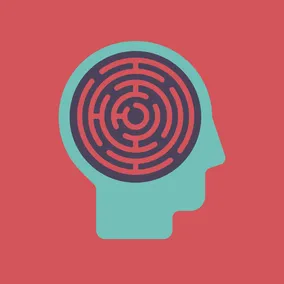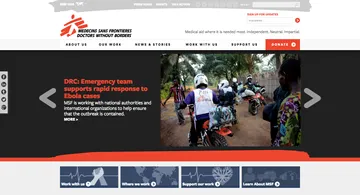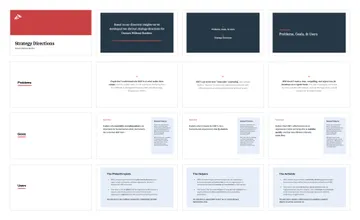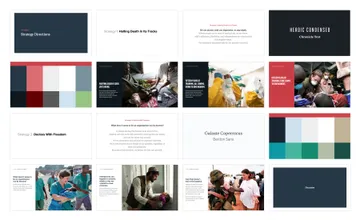Switching Careers: How to Learn Brand Strategy

Natalie Reich, Former Brand Strategist
Article Categories:
Posted on
Moving into a creative field by creating your own clients.
The Catalyst
Let’s say you’re at a great agency and you have a job that you enjoy. Let’s say one day at this agency an opportunity arises for you to help brainstorm with a project team—something you don’t normally get to do. Let’s also say that you get really, way too into it and realize that you might have found your calling. What do you do? Do you just switch jobs?
Indeed, you do. It might not be that easy, but it is that simple. This is what happened when an interest I expressed off-hand during a lunch gathering came back to haunt me/throw my career into a tumble dryer. I was faced with the knowledge that I wanted to learn (and do) brand strategy, instead of shepherding in leads and new projects on our Business Development team as I had been. I needed to find a way to make this dream manifest.
First stop: my Business Development mentor, to see if this intended move might actually be a terrible idea. To my surprise and relief, he was very supportive, recommended next steps, and gave a friendly warning: “You’re going to have two jobs for a while.” Next stop: our Senior Brand Strategist, Ally Fouts, the very colleague who invited me to participate in the brainstorming session. She was also totally supportive, and we came up with a plan: I would learn how to create a Brand Strategy by actually creating one—except it would be a “spec” strategy for a client of my choosing.
The Process
I started by thinking through the kinds of clients I would love to work with. I found myself focusing on a few nonprofit organizations, having worked in that field for a number of years prior to starting at Viget (which leads to a tip when starting a process like this: write what you know!). An important factor in narrowing down the list was seeing who actually did compelling work or had stellar products, but wasn’t equally good at communicating their identity online. We talked through a number of options, finally settling on a great organization that had a less-than-great site experience: Doctors Without Borders, also known as Médecins Sans Frontières (MSF) internationally.

First, I spent some time getting to know MSF and their site. I checked out the videos and ads they’ve created to analyze how they present themselves to the public and solicit donations. I also did some lightweight competitive analysis, and used what I could glean from MSF’s annual reports and my career history working with nonprofits to hypothesize about their main audiences groups. Normally, this would be done in concert with the client, but the nature of spec work meant I had to combine research with some educated guesswork.
The aim of this initial phase is to uncover and articulate the main challenges an organization faces with its current communications, while presenting some corresponding goals that hint at what will become the client’s overarching Brand Strategy. These problems and goals, in a real-life client-facing setting, would be restated at each subsequent presentation to remind everyone where the project started and reinforce our common mission.

The next step is the hardest one: actually coming up with the strategy itself. In MSF’s case, I presented the Problems and Goals to Ally and we worked together to brainstorm potential strategy directions. This part of the process typically involves at least a couple of messy whiteboard sessions to document idea maps and make connections between concepts we might not have recognized before. The result, after rounds of revision, should be a handful of overarching ideas that take varying approaches to addressing our aforementioned problems and goals.
For MSF, the strategy directions we chose to move forward with each had different focuses based on MSF’s unique strengths as an organization, so they differed in tone and style. These distinctions would become even more pronounced later on when I was able to collaborate with a Designer to create some visual explorations for these directions (normally, partnering with Design happens throughout the project). These directions also required Ally’s guidance for a few rounds of revision and refinement to make sure they were clear, compelling, and could properly guide MSF’s communications.
The final step was using the new visual treatments and photography to think through some copy and messaging options for each direction. Since the purpose of this exercise was to learn the strategy concepting process, we stopped short of exploring potential page layouts, UX, or technology executions, which would happen in a real-life redesign project.

The Lessons
After finishing with MSF, I continued challenging myself by doing more spec projects, shadowing on client projects, and eventually taking on my own projects. In the end, my Business Development mentor was right: I did have two jobs for a while. It was about a year from the time I was invited to participate in that first brainstorming meeting until I was staffed on my first official client project and made the move to our Communication Strategy team.
Learning how to create Brand Strategies wasn’t easy, but it was fun—and it was more than worth the evening and weekend hours I put into it. I was fortunate to have a lot of guidance and support from my colleagues, and since switching to my new role I’m getting plenty of practice creating communication strategies, only now, it’s for real.